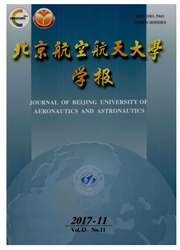

 中文摘要:
中文摘要:
Oil–water two-phase flow patterns in a horizontal pipe are analyzed with a 16-electrode electrical resistance tomography(ERT) system. The measurement data of the ERT are treated as a multivariate time-series, thus the information extracted from each electrode represents the local phase distribution and fraction change at that location. The multivariate maximum Lyapunov exponent(MMLE) is extracted from the 16-dimension time-series to demonstrate the change of flow pattern versus the superficial velocity ratio of oil to water. The correlation dimension of the multivariate time-series is further introduced to jointly characterize and finally separate the flow patterns with MMLE. The change of flow patterns with superficial oil velocity at different water superficial velocities is studied with MMLE and correlation dimension, respectively, and the flow pattern transition can also be characterized with these two features. The proposed MMLE and correlation dimension map could effectively separate the flow patterns, thus is an effective tool for flow pattern identification and transition analysis.
 英文摘要:
英文摘要:
Oil–water two-phase flow patterns in a horizontal pipe are analyzed with a 16-electrode electrical resistance tomography(ERT) system. The measurement data of the ERT are treated as a multivariate time-series, thus the information extracted from each electrode represents the local phase distribution and fraction change at that location. The multivariate maximum Lyapunov exponent(MMLE) is extracted from the 16-dimension time-series to demonstrate the change of flow pattern versus the superficial velocity ratio of oil to water. The correlation dimension of the multivariate time-series is further introduced to jointly characterize and finally separate the flow patterns with MMLE. The change of flow patterns with superficial oil velocity at different water superficial velocities is studied with MMLE and correlation dimension, respectively, and the flow pattern transition can also be characterized with these two features. The proposed MMLE and correlation dimension map could effectively separate the flow patterns, thus is an effective tool for flow pattern identification and transition analysis.
 同期刊论文项目
同期刊论文项目
 同项目期刊论文
同项目期刊论文
 期刊信息
期刊信息
